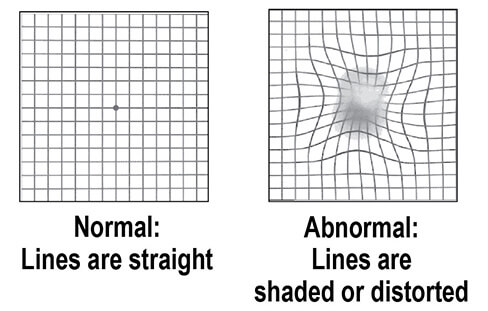
At Nevada Eye Physicians, our experienced eye care professionals provide comprehensive eye examinations to evaluate their patients’ vision and to diagnose any conditions or diseases in the eye. We provide several different eye tests to help evaluate the functionality of the eye to determine if a patient needs a corrective vision solution or a specific treatment to eliminate a problem in the eye. With routine eye exams, conditions can be detected early so that they can be properly treated and corrected before they progress and create further complications. Additionally, with early detection, there are typically more nonsurgical treatment options available compared to when a condition has become more severe. Our practice provides eye exams and diagnostic testing for patients of all ages to help protect the health of one of the body’s most important organs. To learn more or to schedule your eye exam, contact one of our Nevada facilities today.
Diagnostic and Vision Testing
Even if you are not experiencing any abnormal symptoms with your eyes or vision, it is still important to attend routine eye exams. Many conditions or diseases in the eye may not show immediate symptoms, but a problem may still exist. It is recommended that individuals of all ages receive an eye exam at least every 1 – 2 years, but as you get older, examinations may need to be more frequent. Nevada Eye Physicians offers a series of tests to examine a patient’s vision and to determine whether there are any signs of an eye disease, condition, or syndrome that may need further treatment. The specific tests performed during an eye exam may depend upon the patient’s medical history and whether they are experiencing specific symptoms.
Amsler Grid Test
An Amsler grid test is used to detect age-related macular degeneration (AMD). The Amsler grid is a simple chart containing lines and one dot at the center and when used correctly, it can determine issues in a patient’s field of vision. During the test, patients will cover one eye and look directly at the dot in the center of the grid. If any area of the grid begins to look wavy, dark, blurry, or blank the patient will notify their eye care physician. The process will be repeated on the other eye. Your physician may also give you a chart to take home so that you can take the test daily and document any changes in your vision. When taking the test at home, if you continue to experience blurry or distorted vision while viewing the chart, you should contact our facility to make a follow-up appointment immediately.

Visual Field Test
There are several types of visual field tests that can be used to detect blind spots in your vision, as well as other visual field defects. A visual field test may be recommended to determine the full horizontal and vertical range and sensitivity of your vision. This can then reveal information about the presence and severity of a disease in the eye or optic nerve, including glaucoma. In one of the most common visual field tests, your physician may shine a consistent and/or blinking light into your field of vision to help diagnose an eye disease or condition.
Visual Acuity
Visual acuity assesses the clarity of your vision. Often a reading chart is used to measure visual acuity and determine if eyeglasses or contacts are needed to correct your vision. The patient will read letters from a standardized chart to determine their level of vision.
Keratometry
A keratometry test measures the curvature of the cornea within the eye. As a useful tool for evaluating the proper fit for contact lenses, this test involves shining a circle of light onto the cornea and then measuring the reflection.
Refraction
Refraction evaluates the lens strength needed to correct errors in your vision including nearsightedness, farsightedness, and astigmatism. During the test, the doctor will put a series of lenses in front of your line of vision. You may then be asked to determine which set of lenses provides you with the clearest vision. The doctor may also measure how the lenses focus light by using a device called a retinoscope. This test is particularly important for ensuring that patients receive the appropriate prescription for their eyeglasses or contact lenses. It can also determine whether the patient is a candidate for refractive surgery.
What to Expect
Before administering an eye test, your doctor will explain how each test works and what you can expect. If a problem is diagnosed during an eye exam, an appropriate treatment plan will be created for the condition. Medications, eye drops, or laser and traditional surgery may be recommended for treatment. Follow-up appointments may also be necessary for further treatment.
Protect Your Eye Health
Eye exams are crucial for maintaining overall good eye health and for detecting conditions early on. At Nevada Eye Physicians, we provide several diagnostic and vision tests to help determine if a treatment or a corrective vision solution is needed. To schedule your eye exam today, contact one of our nine Nevada locations.



